I don't know what output you expect but out can try to change the shading of the pcolormesh. Also you can add a window to the computation of the spectrogram. You can also change the colors use to represent the spectrogram with cmap.
import matplotlib.pyplot as plt
import numpy as np
from scipy import signal
my_data = np.genfromtxt('signal_value_spectro.csv', delimiter=',',skip_header=0)
Oz=my_data[1:,0]
fs = 1000
t = np.arange(len(Oz))/fs
# nperseg = len(Oz[0])-1
nperseg=50
f50, t50, Sxx_50 = signal.spectrogram(Oz, fs, nperseg=nperseg , noverlap=nperseg-1,window=signal.get_window('hann',nperseg))
nperseg=150
f150, t150, Sxx_150 = signal.spectrogram(Oz, fs, nperseg=nperseg , noverlap=nperseg-1,window=signal.get_window('hann',nperseg))
nperseg=350
f350, t350, Sxx_350 = signal.spectrogram(Oz, fs, nperseg=nperseg , noverlap=nperseg-1,window=signal.get_window('hann',nperseg))
plt.figure(figsize=(10,10))
plt.subplot(211)
plt.plot(np.arange(len(Oz))/fs,Oz)
plt.subplot(234)
plt.pcolormesh(t50, f50, Sxx_50, shading='auto',cmap = 'inferno')
plt.ylim([0,70])
plt.ylabel('Frequency [Hz]')
plt.xlabel('Time [sec], nperseg = 50')
plt.subplot(235)
plt.pcolormesh(t150, f150, Sxx_150, shading='auto',cmap = 'inferno')
plt.ylim([0,70])
plt.ylabel('Frequency [Hz]')
plt.xlabel('Time [sec], nperseg = 150')
plt.subplot(236)
plt.pcolormesh(t350, f350, Sxx_350, shading='auto',cmap = 'inferno')
plt.ylim([0,70])
plt.ylabel('Frequency [Hz]')
plt.xlabel('Time [sec], nperseg = 350')
plt.show()
But your big issue is the length of your signal. You are limited by the time-frequency resolution. Basically the number of frequency band you will get is the length of nperseg divided by 2, spread over the interval [0, FS/2]. As your signal is 440 samples, the nperseg should be lover. But if you increase the nperseg too much, you will loose the time resolution. For instance, if nperseg = 50, there will be 390 point in time but id nperseg = 350 there will only be 90 point in time.

Info are avaialable in the doc https://docs.scipy.org/doc/scipy/reference/generated/scipy.signal.spectrogram.html


